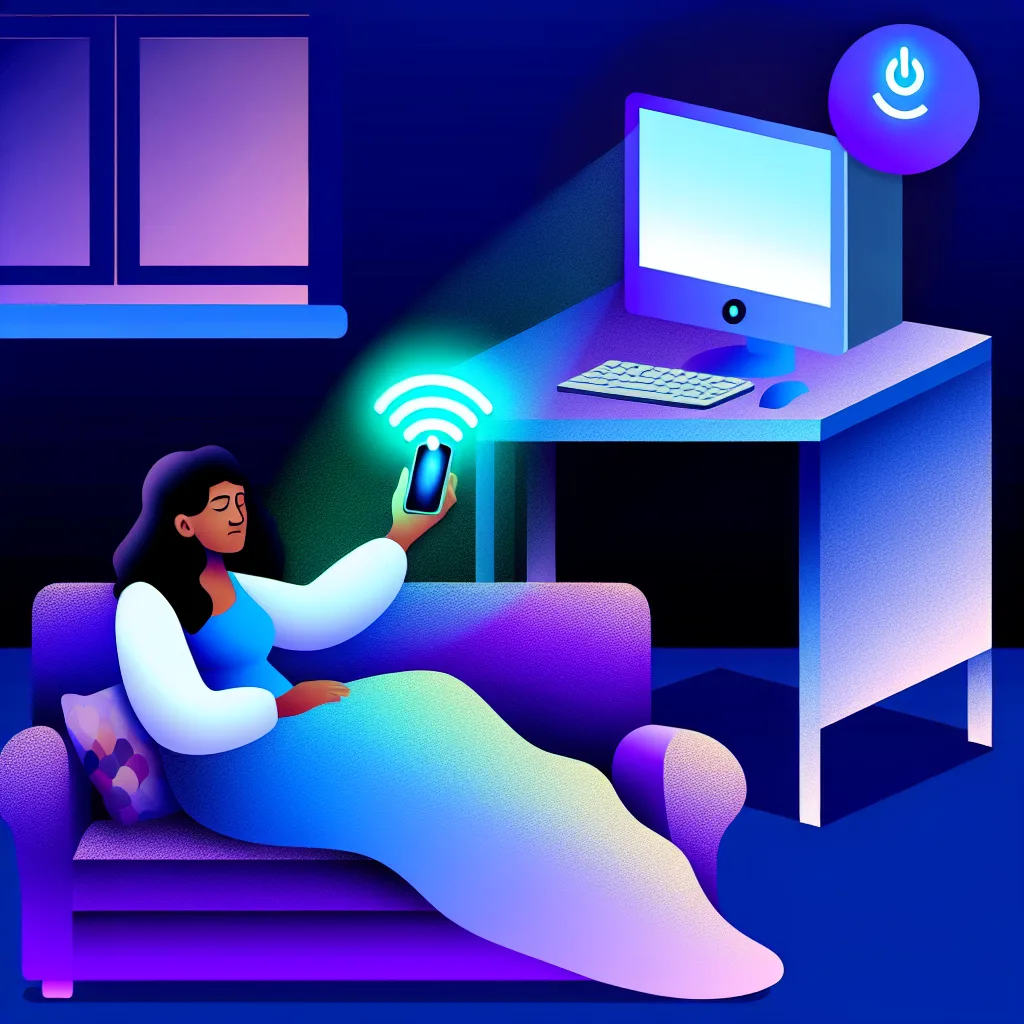It’s like a remote starter for your computer, and it’s surprisingly easy to set up Wake on LAN WiFi.
Have you ever been settled on the couch, or maybe already at the office, and realized you need a file from your desktop PC? The one that’s currently sitting upstairs, fast asleep. The old solution was to sigh, get up, and press the power button. But what if you could wake it up remotely, right from your phone or laptop, without a single cable in sight? That’s the magic of setting up Wake on LAN WiFi, and it’s a lot easier to pull off than you might think.
I used to think Wake on LAN was strictly for nerdy network admins with Ethernet cables running through their walls. The idea of doing it wirelessly seemed like some next-level tech wizardry. But it turns out, most modern computers are perfectly capable of it. We just have to know which settings to tweak.
So, let’s grab a coffee and walk through how to give your PC a wireless remote starter.
First Things First: What Do You Need for Wake on LAN WiFi?
Before we start diving into settings menus, let’s make sure you have the right gear. It’s pretty basic, and you likely already have it:
- A Compatible Motherboard and BIOS/UEFI: Almost any computer made in the last decade should have this. It’s the foundational setting that allows a computer to respond to a “wake up” call even when it’s off or asleep.
- A WiFi Card That Supports the Feature: This is the key ingredient. Not all wireless network adapters are created equal. The feature is technically called Wake on Wireless LAN (WoWLAN), and your card needs to support it. Most modern internal cards (especially Intel ones) do.
- A Little Bit of Patience: We’ll be navigating a couple of different settings menus. None of it is difficult, but it can take a few minutes to find the right checkboxes.
Step 1: Diving Into Your PC’s BIOS/UEFI
Our first stop is your computer’s fundamental control panel: the BIOS (or UEFI on newer systems). This is the software that runs when you first boot up your PC, before Windows even starts.
- Restart your computer.
- As it boots up, press the key to enter setup. It’s usually DEL, F2, F10, or F12. The screen will flash a message telling you which key to press.
- Once you’re in, you’ll need to look for settings related to power management or onboard devices. Every BIOS looks different, so you might have to hunt around.
- Look for an option named something like “Power On By PCI-E” or “Wake on LAN.”
You might be thinking, “But I’m using WiFi, not a PCI-E device!” That’s true, but your internal WiFi card is connected via a PCI-E slot on the motherboard, so enabling this setting is often the first step to allowing it to wake the system. Enable it, then save your changes and exit the BIOS. Your computer will restart.
Step 2: Configuring Your Wake on LAN WiFi Settings in Windows
With the BIOS ready, it’s time to tell Windows that it’s okay for your WiFi card to wake up the computer.
- Right-click the Start button and select “Device Manager.”
- Expand the “Network adapters” section.
- Find your wireless adapter in the list, right-click it, and choose “Properties.”
Now, you’ll be looking in two different tabs here.
First, click the “Power Management” tab. You should see a few checkboxes. Make sure these two are checked:
* Allow this device to wake the computer.
* Only allow a magic packet to wake the computer.
The “magic packet” is the special network signal your phone or another computer will send to wake up the PC. Ticking this box prevents random network traffic from waking it up accidentally.
Next, head over to the “Advanced” tab. This is a long list of properties. Scroll through it and look for anything named “Wake on Magic Packet” or “WoWLAN.” If you find it, make sure its value is set to “Enabled.” This is the most important step! If you don’t see this option, your network card may not support WoWLAN. For more technical details on these properties, Microsoft’s official documentation is a great resource.
Step 3: Finding Your MAC Address and Sending the Packet
Your PC is now ready to receive a wake-up call. To send it, you need one crucial piece of information: your WiFi card’s MAC address. Think of it as a unique, permanent mailing address for your network adapter.
Here’s the easiest way to find it:
1. Press the Windows key and type cmd to open the Command Prompt.
2. Type ipconfig /all and press Enter.
3. Scroll through the results until you find your “Wireless LAN adapter Wi-Fi.”
4. Look for the “Physical Address” line. It will be a string of six pairs of letters and numbers, like A1-B2-C3-D4-E5-F6. That’s your MAC address. Copy it down.
Now, you just need an app to send the magic packet. There are dozens of free options for your phone (like Wake On LAN for Android or Mocha WOL for iOS) or other computers. In the app, you’ll create a new profile for your PC, enter the MAC address you just found, and that’s it.
Put your PC to sleep, tap the button in your app, and watch it come to life. No cables required. It’s a simple trick, but it’s one of those little conveniences that makes you feel like you’re living in the future.
For a deeper dive into what MAC addresses are and how they work, check out this excellent explainer from How-To Geek.
